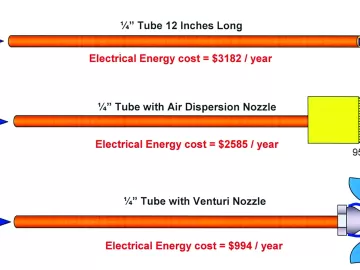Cell-Connected Compressed Air Monitoring Systems Save Time and Money
Like any system, to properly manage compressed air equipment some measurements have to be taken. Typically, some sort of data logging equipment is installed to measure various pressures, amps or power, flow, and sometimes temperatures and dewpoints. Placing this equipment on a system is like putting an electrocardiograph machine on a human heart, the heartbeat of the compressed air system in a plant can be analyzed to determine if everything is normal or if there is a problem, all without interrupting the system.












